Description
Los guaraníes eran alfareros. Esta técnica está relacionada con el cultivo y la vida sedentaria, es decir no eran nómadas. Según la mitología, la mujer nace dentro de la olla y en paralelo aparece el maíz y la mandioca o yuca. Producían recipientes de distintos tamaños y los entierros los hacían en grandes urnas de barro. Era una actividad femenina.
Utilizaban la arcilla o ñai´u. A principios del 1990 se tuvo conocimiento por un testimonio de una alfarera de Carapeguá, que no trabajaban la arcilla cuando soplaba el viento sur (viento frío y seco, que resquebrajaría la pieza durante la cocción) y lo cocinaban aún con fuego circundante, sabiduría guaraní, hoy en desuso. Para formar el recipiente se sigue utilizando la técnica en espiral. La pintura de color rojo o engobe se obtiene por decantación de la tierra ferrosa de color rojo que abunda en todo el territorio de la Región Oriental del Paraguay y el color blanco es del caolín.
Las formas y diseños utilizados por los guaraníes prácticamente desaparecieron. La alfarería popular satisfacía la demanda doméstica de recipientes para la cocción, jarras, vasos, platos, macetas, candelabros, la santería en general y demás enseres para cubrir las necesidades materiales y espirituales.
El kambuchi o cántaro. Es creado durante la colonia como recipiente donde se guardaba el agua para beber en las casas, que además siempre la mantiene fresca.
Cantarilla (Antecesor de los termos para agua fría). Recipiente de barro con doble boquilla utilizado para trasportar agua potable durante los viajes en carros, carretas o llevarlos al lugar de trabajo y las chacras. Esta cantarilla servía para tomar el terere (bebida fresca tradicional del Paraguay y del Mercosur obtenida cebando el agua a la yerba mate). Anterior a la cantarilla se utilizaban grandes hy´a o porongos atados con cuerda de yvira.
Actualmente casi toda la producción de alfarería es decorativa. En los últimos años se está incentivando la producción de recipientes para la cocción de alimentos. Las comunidades productoras son Areguá e Itá, Departamento Central; Tobatí, Departamento de Cordillera y Yaguarón, Departamento de Paraguarí. Los objetos se pueden comprar en estas comunidades o encargar objetos especiales, pero además se colocan al borde de las rutas principales para facilitar a los compradores la adquisición y al mismo tiempo hacer pedidos.
English
The Kambuchi jar
The Guarani were potters. This technique is related to cultivation and sedentary life, i.e. they were not nomadic. According to mythology, the woman is born inside the pot and at the same time, corn and manioc appear. They produced vessels of different sizes and were buried in large clay urns. This was a female activity. They used clay or ñai’u. At the beginning of the 1990s, a potter from Carapeguá testified that they did not work the clay when the south wind was blowing (cold and dry wind, which would crack the piece during firing) and that they still fired it with a surrounding fire, Guarani wisdom, which is no longer in use today.
The spiral technique is still used to form the vessel. The red paint or engobe is obtained by decantation of the red-coloured ferrous earth that is abundant throughout the Eastern Region of Paraguay, and the white colour comes from kaolin. The shapes and designs used by the Guarani have practically disappeared. The popular pottery satisfied the domestic demand for cooking vessels, jars, glasses, plates, pots, candlesticks, Santeria in general and other utensils to cover material and spiritual needs.
The kambuchi or jar. It was created during the colonial period as a container where water was kept for drinking in the houses, which also always kept it fresh.
Cantarilla (predecessor of the thermos for cold water). An earthenware container with a double nozzle used to carry drinking water during journeys in carts and carts or to take it to the workplace and farms. This cantarilla was used to drink terere (a traditional Paraguayan and Mercosur fresh drink obtained by adding water to yerba mate). Before the cantarilla, large hy’a or porongos tied with yvira rope were used. Nowadays almost all pottery production is decorative. In recent years, the production of cooking vessels has been encouraged. The producing communities are Areguá and Itá, Central Department; Tobatí, Cordillera Department and Yaguarón, Paraguarí Department.
The objects can be bought in these communities or special objects can be ordered, but they are also placed at the edge of the main roads to make it easier for buyers to purchase and at the same time to place orders.

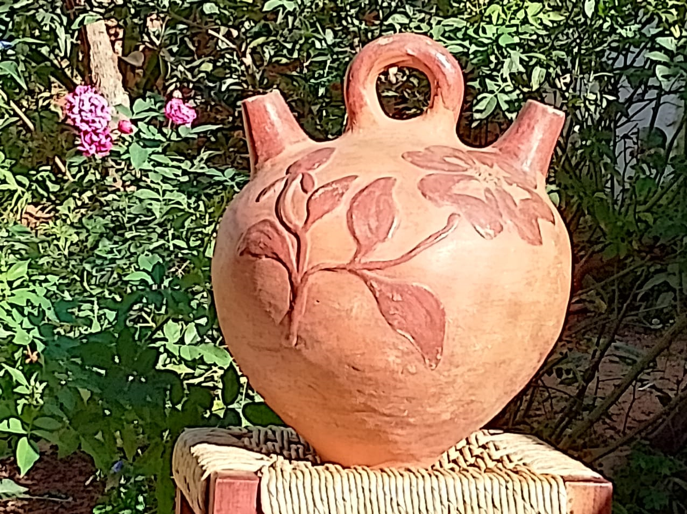
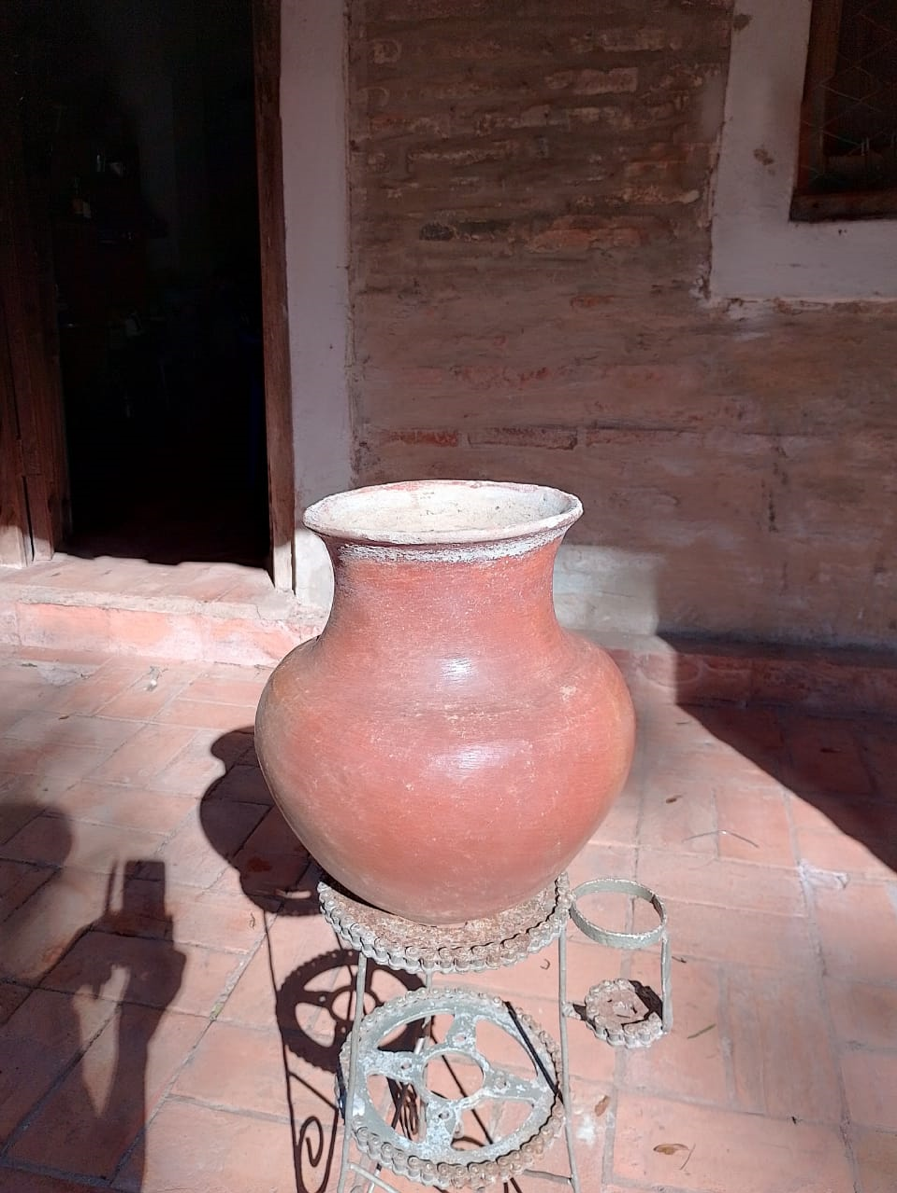
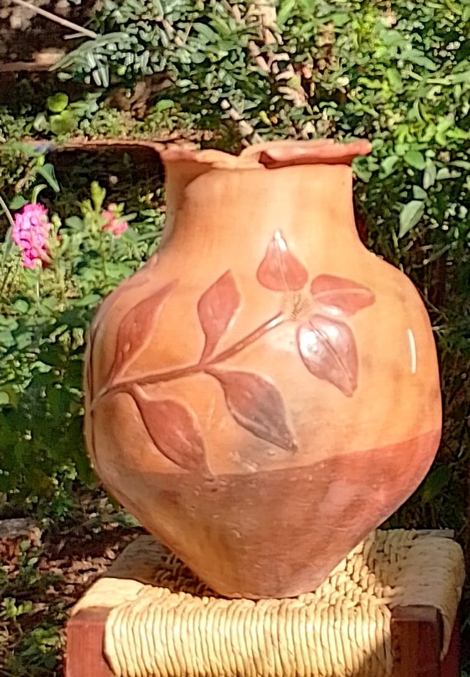
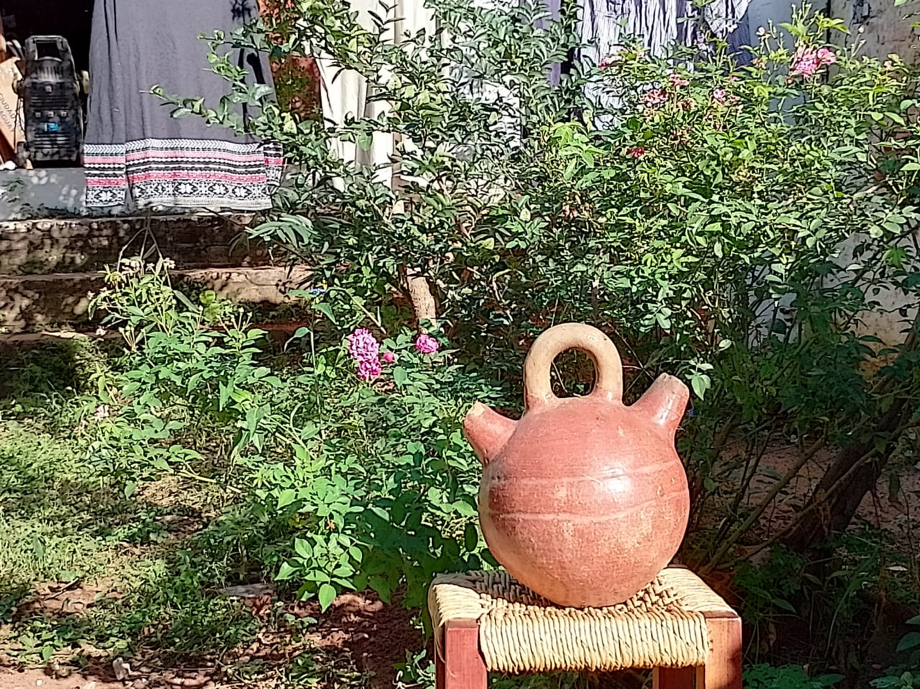
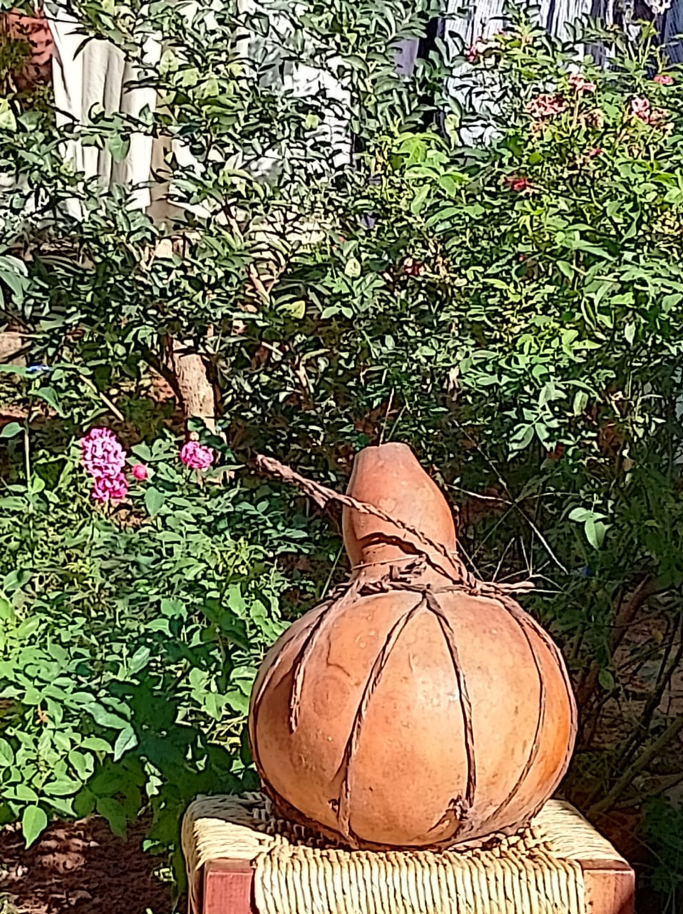
Reviews
There are no reviews yet.